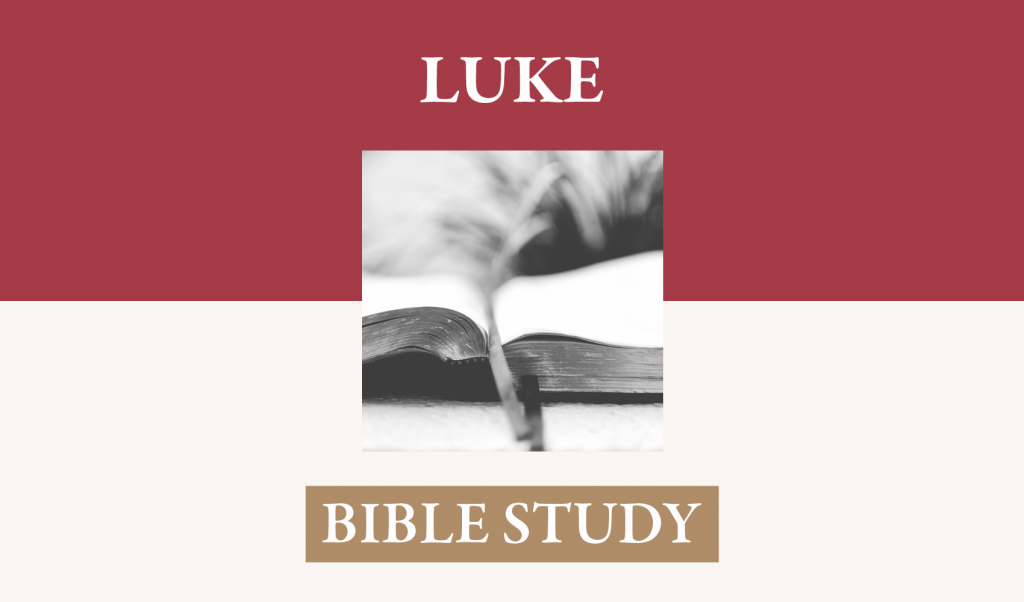Week of April 1, 2018
The Point: The empty tomb points to the faithfulness of God.
The Resurrection: Luke 24:1-12.
[1] But on the first day of the week, at early dawn, they went to the tomb, taking the spices they had prepared. [2] And they found the stone rolled away from the tomb, [3] but when they went in they did not find the body of the Lord Jesus. [4] While they were perplexed about this, behold, two men stood by them in dazzling apparel. [5] And as they were frightened and bowed their faces to the ground, the men said to them, “Why do you seek the living among the dead? [6] He is not here, but has risen. Remember how he told you, while he was still in Galilee, [7] that the Son of Man must be delivered into the hands of sinful men and be crucified and on the third day rise.” [8] And they remembered his words, [9] and returning from the tomb they told all these things to the eleven and to all the rest. [10] Now it was Mary Magdalene and Joanna and Mary the mother of James and the other women with them who told these things to the apostles, [11] but these words seemed to them an idle tale, and they did not believe them. [12] But Peter rose and ran to the tomb; stooping and looking in, he saw the linen cloths by themselves; and he went home marveling at what had happened. [ESV]
“On the Third Day [24:1-12]. The gospel is the good news about Jesus Christ: His life, His death, and His resurrection. The gospel promises that if we believe in Jesus, all our sins will be forgiven and we will live with God forever. This good news centers on the person and the work of Jesus Christ. We see this very clearly in the Gospel of Luke, which is all about Jesus from beginning to end. Already in the opening verses. Luke announced his intention to give certainty concerning the things you have been taught [Luke 1:4], meaning the things taught about Jesus. Jesus is the center of everything that happens in the Gospel of Luke: calling disciples, teaching parables, rebuking religious leaders, calming storms, casting out demons, healing diseases, and feeding multitudes. Then, in the last week of His life, Jesus was betrayed, arrested, tried, condemned, and crucified. His living presence dominates every page of Luke’s Gospel. Until we get to chapter 24, that is. Here we find Jesus conspicuous by His absence. It is now the third day since He was crucified, dead, and buried – the day He said that He would rise from the dead. So Christ has risen. Yet in the opening verses of this chapter He is nowhere to be found – at least not in His bodily presence. Why not? If this is the day Jesus rose from the dead, then why don’t we see Him here, as we do everywhere else in this Gospel? If Luke wants us to know Jesus for sure, then why don’t we see Him raised from the dead.
What the Women Found. To understand why Jesus seems to be missing, we need to see what the women found when they went to the empty tomb, what the angel said to them there, and how people responded, whether in faith or unbelief. We begin with the little group of women who were the last people to leave the cross and the first to arrive at the empty tomb. At the end of chapter 23 these women still had some unfinished business to attend to. They had watched Joseph of Arimathea take the lifeless body of Jesus down from the cross and then lay Him in an unused tomb. Taking careful note of where the body was laid, they quickly went home to prepare the spices needed for a full and proper burial. Then they took their Sabbath rest, waiting one holy day before paying their last respects to the teacher they loved. The women never finished their task, however. They went back to the tomb the following day, which was the first day of the week. A surprise was waiting for them: But on the first day of the week, at early dawn, they went to the tomb, taking the spices they had prepared. And they found the stone rolled away from the tomb, but when they went in they did not find the body of the Lord Jesus [1-3]. At early dawn is a striking expression. When these women set out on their errand of mercy, it was not simply dawn, but early dawn. This indicates how eager these women were to finish their task. In the providence of God, there had not been time to complete the burial process on the day Jesus was crucified. This was an important part of God’s plan because it drew the women back to His tomb. All during the long Sabbath between Good Friday and Easter Sunday they waited to finish their task, and when the time came, they left the house at the earliest possible instant. The women expected to find the dead body of Jesus. When last they saw Him He was as dead as could be, and naturally they assumed that death was the end of His earthly existence. Thus it never occurred to them that His body would be anywhere except the place where they had seen it laid to rest. Imagine how shocked they must have been to enter the tomb and find the body missing! For anyone who knows how this story ends – with Jesus triumphing over death through the resurrection of His body – it is hard to appreciate the full extent of their surprise. When they discovered that the body was gone, this could only add bitter sorrow to their sad distress. It was the shock of their lives – the aftershock that followed the earthquake of the crucifixion. The Jesus who was crucified, dead, and buried had now disappeared. Luke tells us that they were perplexed about this [Luke 24:4]. They were at a total loss. It simply did not make any sense to them; they could not explain it. Why did Jesus die the way that He died, suffering the dark reproach of the cross? How could someone so alive end up dead? Where was the body they had seen buried? Although the women did not know the answers to these questions, there were hints all around them. Miraculously, the stone had been rolled away from the tomb, leaving the house of death door-less. Even more remarkably, the body was not in the tomb. These were the first intimations of the resurrection, that Jesus has been raised from the dead. For us there is a further hint in the title Luke gives to Jesus in verse 3, where he calls him Lord. This is one of the specific titles of the risen Christ, for it is by His resurrection that Jesus is declared to be the Lord [Acts 2:36]. Even though Luke has not yet shown us that Jesus is alive, already he is expressing the joy of the resurrection and cannot help but confess that Jesus is Lord. The women were not ready to say this yet. They were still distressed and perplexed. All they could see was that the body of Jesus was not where they expected it to be. What the women found is that they could not find Jesus.
What the Angels Said. The women also found some angels at the empty tomb, and their words help us understand why Jesus is missing from this passage [4-6]. Angels are the holy messengers of God. When they appear to human beings, they are usually robed in radiant splendor. Here they were resplendent in white and shining robes, what Luke calls dazzling apparel. Understandably, the women were awestruck, so they bowed down to worship. Then the angels gave them a mild rebuke, which was phrased in the form of a question: Why do you seek the living among the dead? This was the angels’ gentle way of saying that the women were operating on the basis of a faulty assumption. They assumed that Jesus was dead, which is why they were at the tomb so early in the morning, carrying the oils and the spices for His embalming. They believed that Jesus was still buried, and therefore they were looking to find Him among the dead. But they had the wrong premise! Jesus was no longer dead at all, but alive, and there is no sense looking for someone where he is not to be found. He is not here, but has risen, the angels said. Jesus was not dead, but alive, and therefore this was the wrong place to look for Him. When we say that Jesus rose from the dead, we are referring to His bodily resurrection. We are not merely saying that Jesus is alive in our minds, our hearts, or our memories. Nor are we simply saying that His soul is immortal. On the contrary, we are dealing with the objective facts and the physical reality of what happened to a dead man’s body. The physical body of Jesus was raised from death to life by the power of God. This was not simply a case of resuscitation: the coming back to life of a mortal body that would die again. Rather, it was a physical resurrection: the raising of Jesus Christ to the immortal splendor of a body that could never die again. God sent the angels to say: Jesus is alive! He knew that the women would be in the wrong place on the first Easter morning, looking for the living among the dead. So He graciously sent messengers to tell them the good news of the gospel. God often does this: even when we go to the wrong place, He is there ahead of us, pointing us back in the right direction. In this case, the angels were at the tomb to say that although Jesus had been in the grave, He is not in the grave any longer. How could the women know that this was true? As far as they were concerned, Jesus was still missing. How could they believe in the resurrection of His body unless they could see Jesus with their own eyes? More importantly, how can we believe this? How can we know for sure that Jesus really did rise from the dead? What is the best way to respond to attacks on the veracity of the resurrection? Some Christians answer by giving evidence for the resurrection. There is a place for this approach in the practice of apologetics, both as a way of confirming the faith and casting doubt on unbelief, if not actually convincing people of the truth of the gospel. The very fact of the empty tomb is evidence that demands a verdict. The body of Jesus was dead, having been crucified. Then it disappeared from the very tomb where it was buried. This was widely known and accepted in the days after Christ was crucified. No one could say that Jesus was still in the grave because the grave was vacant. Furthermore, the body that disappeared was the very body that was crucified. This historical fact – the absence of His body from the empty tomb – joins the crucifixion to the resurrection and helps to confirm that Jesus rose from the dead. Yet this is not how the angels tried to convince the women at the empty tomb. They did not try to reason on the basis of the physical evidence of the empty tomb. Nor did they make a case for Christ by refuting alternative explanations for what happened to the missing body. Instead, the angels simply told these women – and us – to remember what Jesus said: Remember how he told you, while he was still in Galilee, that the Son of Man must be delivered into the hands of sinful men and be crucified and on the third day rise [6-7]. We are to believe in the resurrection on the basis of what Jesus said. The empty tomb is not self-explanatory. There is a word that explains the deed, and this word is the gospel message that Jesus not only died, but also rose again with a glorious and everlasting body that would never die again. The angels told the women to remember the prophecies Jesus made of His death, burial, and resurrection [Luke 9:22; 18:32-33; 24:46]. Everything happened just the way that Jesus said. The words of His prophecies all came true. He was crucified, dead, and buried. Now it was the third day – the day Jesus promised to rise from the grave. Indeed, this was the day when He must rise from the grave, for the earlier promises of the gospel expressed a divine compulsion. Therefore, when the women saw the empty tomb, they should have known that Jesus was alive from the dead. The reason they were perplexed was that they did not yet believe what Jesus said. This is often the case: unless and until we believe in the Word of God, life is all too perplexing. But when we do believe, everything starts to fall into place. This is how we know for sure: by believing the gospel promise that Jesus died and rose again. We have not yet seen Jesus in His resurrection body, any more than the women saw Him when they went into the empty tomb. But we have heard the gospel word, which should be enough for us, as it should have been enough for them. Remember what Jesus said: He would be crucified to atone for our sins and raised to give us eternal life. If we believe this, God will forgive our sins, raise our body from the grave, and give us everlasting life.
How the Disciples Responded. How did people respond to this saving message of the gospel? How should we respond to the angels’ message of the cross and the empty tomb? The women responded in faith [8-10]. These godly women had followed Jesus almost from the beginning. They had supported Him throughout His earthly ministry. They had heard His teaching, and therefore could remember what He said. As soon as they remembered His words, they were no longer perplexed. They understood why the tomb was empty: Jesus was not among the dead, but among the living. He had risen from the grave! This was the best of all possible news. It meant that they would see Jesus again. It meant that God had won the total victory over sin and death. It meant that when they died, they would live again with God. Such news was too good to keep to themselves. Immediately they went and found the eleven remaining disciples and all the other followers of Christ. They testified to what they had seen and heard, and thus they became, as Augustine said, “the first preachers of the resurrection.” This is the way to respond to the resurrection, by remembering what Jesus said, believing what Jesus did, and then telling other people about it. We are called to be like them by announcing the saving message that Jesus died and rose again, and that simply by believing in Him anyone may have eternal life. At first the apostles did not believe a word of the women’s testimony. They did not respond in faith, but in unbelief [11]. What the women said about the empty tomb and about Jesus rising from the dead sounded like unintelligible nonsense. The disciples thought that the women were out of their minds – that their emotional response to the death of Jesus had overpowered their reason. They simply did not believe that Jesus had risen from the dead. The same thing still happens today. Many people think that the Bible is a fairy tale. They do not believe that Jesus was crucified to pay for the guilt of our sins, and they certainly do not believe that He came back to life. They are like the people Jesus described in the story of the rich man and Lazarus, who would not even believe in God if they saw someone rise from the dead [Luke 16:31]. How encouraging it is to see that the disciples of Jesus were just as skeptical. At first they did not believe in the resurrection either, but later they came through their doubts to give a strong testimony of faith in Jesus Christ. In fact, they became so committed to Christ that they kept preaching His gospel even when they were persecuted, most of them unto death. This gives us reason to hope that many of the people we love and pray for will come to Christ. Like the disciples, they may still come through their unbelief and into faith in Jesus Christ. This also encourages us in our doubts. If we are not yet sure that Jesus rose from the dead, we can still hope that God will grant us the gift of faith so that we may believe in Jesus and be saved. Anyone who doubts the resurrection would be wise to follow the example of Peter. When the rest of the disciples could not believe what the women were saying. Peter went to check things out for himself [12]. When Peter heard the first news of the resurrection, he wanted to investigate for himself. Was it really true? Did Jesus rise from the dead? Is there any chance, Peter must have wondered, that someone who denied the Christ might still be forgiven? When Peter saw the empty tomb, he still wasn’t sure. The word marveling expresses astonishment and amazement without indicating whether Peter understood the full implications of what he was seeing. Maybe he was still thinking things through. But he would not stop thinking things through until he was sure he understood what God wanted him to know about Jesus.
A Word That Demands Faith. Have you carefully considered the claims of Christ? Have you honestly investigated the empty tomb, as Peter did, to find out whether Jesus rose from the dead? Sadly, some people refuse to take the trouble. Will you examine the evidence? In his Gospel, Luke has written an orderly, reliable, eyewitness historical account of the life and death and resurrection of Jesus Christ. His report challenges us to reach our own decision as to whether Jesus is among the living or the dead. There are many good reasons to believe that Jesus is alive. There is the evidence of history, starting with the empty tomb itself. Where did Jesus’ body go if it did not rise from the grace and ascend to heaven? There is also the existence of the church. How did the first Christians recover from their despair over the death of Jesus so quickly and change the world in so many ways if not by the power of the risen Christ? Then there is the worship of the church on Sunday. Why did Christians ever begin worshiping on the first day of the week, if not because this is the day that Jesus rose from the dead? But even if you do not find any of this evidence fully persuasive, will you at least believe the true words of Jesus Christ, who is a faithful prophet and the divine Son of God? Jesus said that He would be crucified, dead, and buried, and that on the third day He would rise again. Do you believe His words or not? It all comes back to believing the gospel words of Jesus. According to the word of the gospel, Jesus is not among the dead, but among the living. He was crucified for the forgiveness of all our sins. His sacrifice has been accepted by God and now He has risen from the grave. Death is not the end for us, but by faith we have the free gift of eternal life. Now the resurrection body of the Lord Jesus Christ is at the right hand of God the Father in heaven, shining in glory and ruling the universe. One day soon He will raise us up to be with Him forever, to the glory of God.” [Ryken, pp. 630-641].
Questions for Discussion:
- Put yourselves in the place of the women on that early Sunday morning. Imagine what you would have felt when you arrived at the tomb and found it empty with the stone rolled away. Just two days previously they had seen Jesus crucified and buried in this tomb. But now He is missing. Luke describes the women as perplexed. But then two angels appear. What key truth did the angels give the women? Why did they say the women should not be surprised that the tomb is empty? This is the same ultimate reason why anyone should believe in the resurrection. Because Jesus said that it would happen! We are to believe in the resurrection on the basis of what Jesus said. And this is the reason why we now believe in a future resurrection; because Jesus said that it will happen. Faith in who Jesus is always leads to trust in what He said.
- Note how Luke stresses God’s plan and the movement of divine history in this passage. The three key verbs of verse 7 (delivered, crucified, rise) are all in the passive voice indicating that someone other than Jesus is in control of these events. Who is in control? Why is it important that Luke emphasizes God’s control over these events? Compare this to Luke’s writing in Acts 2:22-24 and 4:27-28 where he shows that God’s control over these events does not remove the sinful responsibility of those persons involved in causing Jesus to be crucified. But God’s control does provide these events with purpose as God accomplishes His plan.
- The resurrection of Jesus is often described as a “watershed” event meaning that it is a crucial turning point that significantly affects our thinking and actions. See Paul’s words in 1 Corinthians 15:12-14: Now if Christ is proclaimed as raised from the dead, how can some of you say that there is no resurrection of the dead? But if there is no resurrection of the dead, then not even Christ has been raised. and if Christ has not been raised, then our preaching is in vain and your faith is in vain. Why do you think that the truthfulness of the resurrection of Jesus is so crucial for our faith? See, for example, Romans 1:4; 6:5; Philippians 3:10-11; 1 Peter 1:3.
References:
Luke 9:51-24:53, Darrell Bock, BENT, Baker.
The Gospel According to Luke, James Edwards, Pillar, Eerdmans.
Luke, David Garland, Zondervan, ebook.
Luke, volume 2, Philip Ryken, REC, P&R Publishing.

















